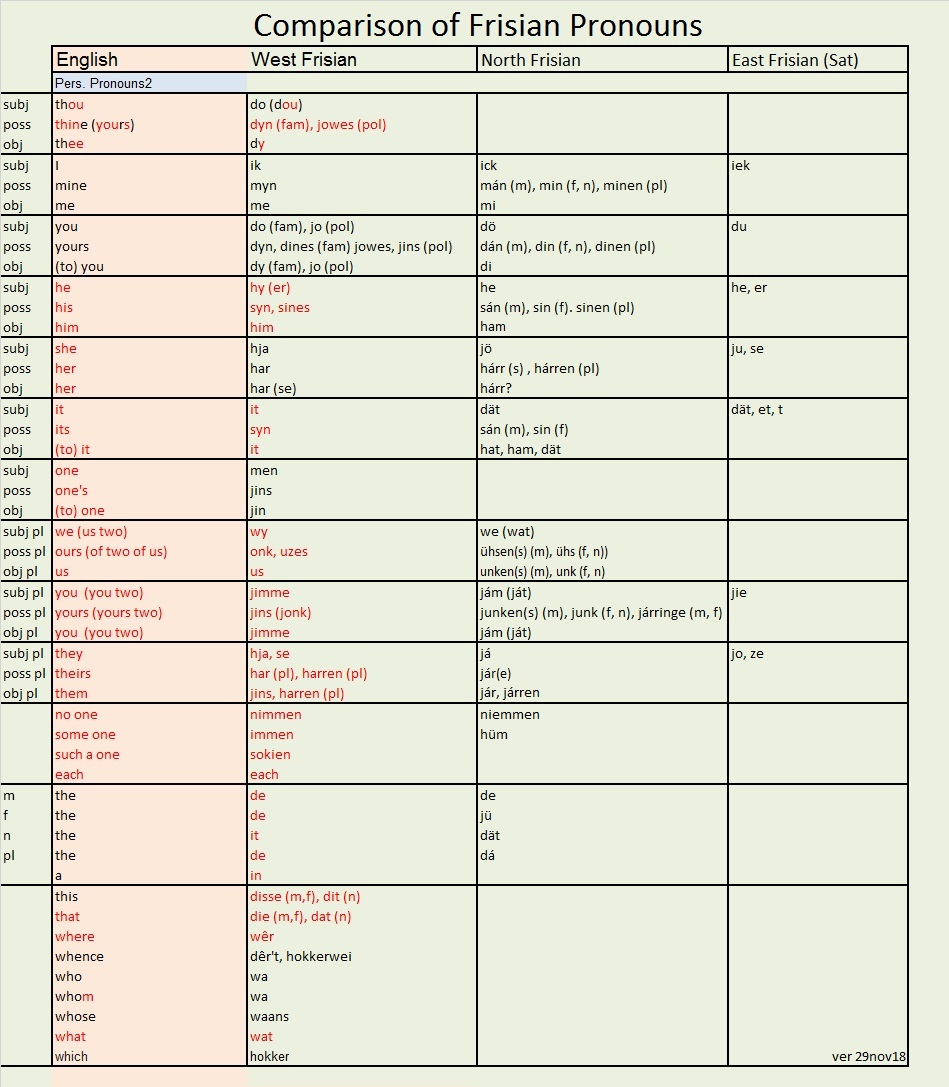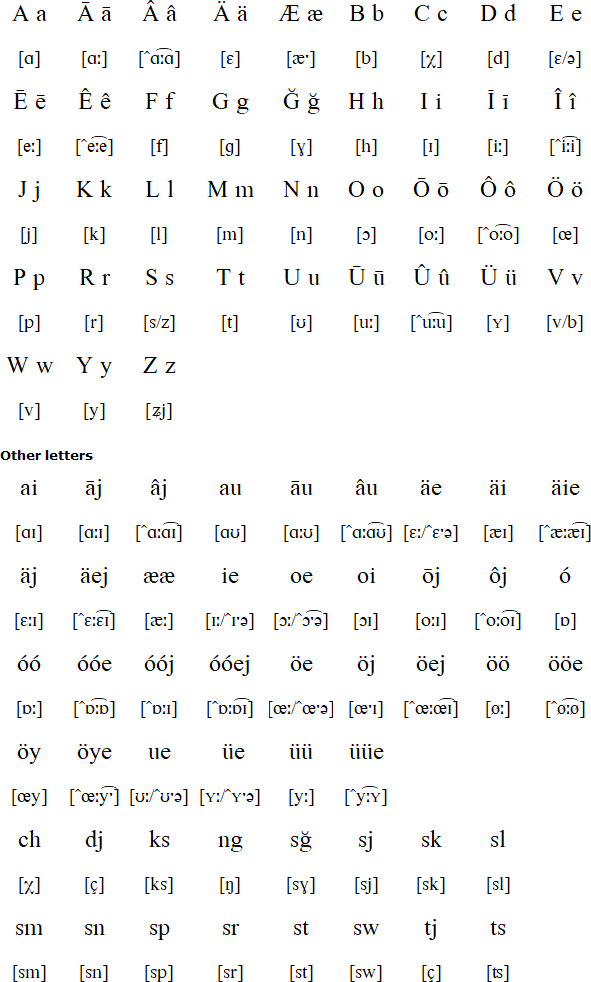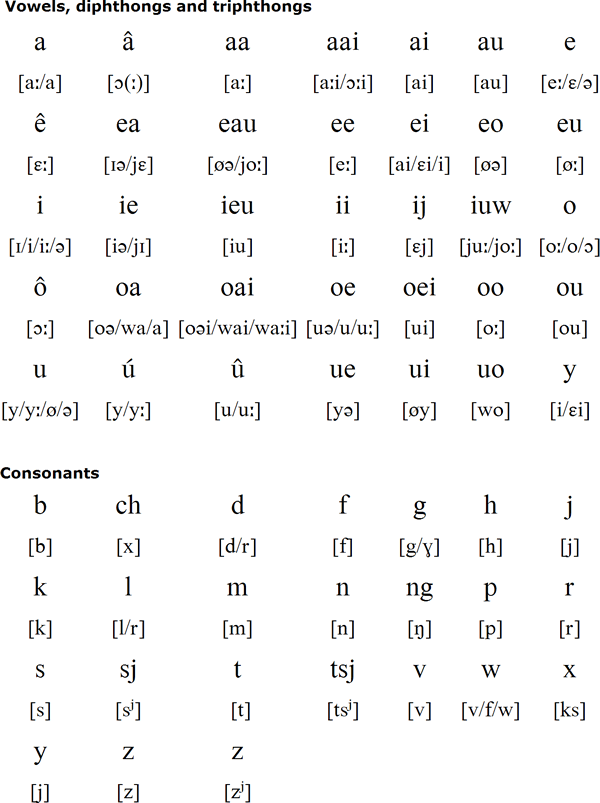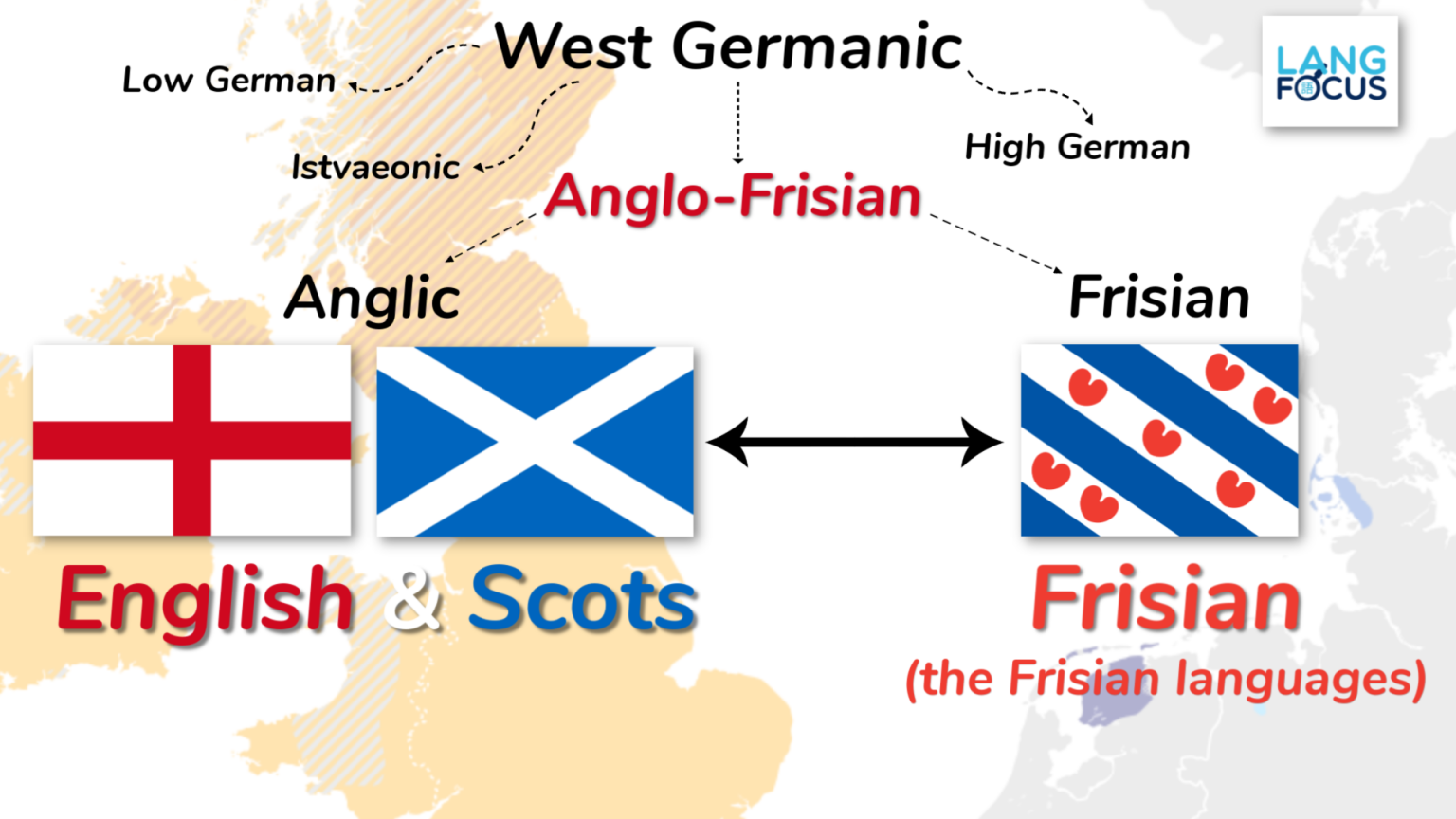East Frisian language, alphabet and pronunciation

Frisian Language
By 1600 the eastern dialect of Frisian was in rapid decline and by 1700 it was a dead language in the region of East Friesland. However, a community of East Frisian speakers had settled in Saterland, a strip of sandy farmland 2 miles wide by 9 miles long and 20 miles south of the East Friesland border, surrounded by difficult to cross marshland.

The Frisian Language and Literature A Historical Study (Paperback)
In East Frisia proper, East Frisian Low Saxon is spoken today, which is not a Frisian language, but a variant of Low German/Low Saxon . Depending upon their location, the six Frisian languages have been heavily influenced by and bear similarities to Dutch and Low German/Low Saxon, and in addition North Frisian has a Danish substrate.

Hello all, The Frisians are one of the minority peoples of Europe, Inhabiting the coast of the
East Frisian is one of the Frisian languages. Its last surviving dialect is Saterland Frisian spoken in Saterland in Germany. There once were two main dialects, Ems and Weser. Weser, including the Wursten and Wangerooge dialects, held out until the 20th century. Ems continues with a couple thousand adult speakers of the Saterland dialect.

FRISIAN Sister Language(s) of English! Language, Erin robinson, English
East Frisian is spoken in the Ostfriesland region of Lower Saxony in the northwest Germany by about 200,000 people. It is also known as East Frisian Low Saxon, Ostfriesisch, Ostfriesisch-Niederdeutsch or Platt. It is a mixture of Eastlauwers Frisian, Low German, Dutch and French.

East Frisian language, alphabet and pronunciation
East Frisia was a region with five spoken languages: Ostfriesisch was colloquial language, Latin was scholarly language, Frisian was a minority language. Dutch was the main written language in the western part and Hochdeutsch in the eastern part.

Frisian and Old Saxonian by on DeviantArt Language
1. Frysk (West Frisian) Along with Dutch, West Frisian is the official language in the northern province of Friesland in the Netherlands. There are over 450,000 Frysk speakers, who typically identify themselves as ethnically Dutch, rather than Frisian. They also have their own regional dialects.

The Frisian language is considered by many linguists to be the closest living language to
Frisian languages Frisian speakers Frisian refers to three languages that come from Friesland, a province in the Netherlands. They are spoken in the Netherlands, in Eastern Germany, and in some areas of Jutland, Denmark. It is also spoken on the Frisian Isles (Wadden Isles) and Western German (East Frisian) Isles such as Borkum .

Frisian languages, alphabets and pronunciation
Frisian, which Frisian-speakers call Frysk, is the second language of the northern Netherlands and the closest living relative of English. In early modern Europe Frisian was spoken in the Dutch province of Friesland (the West Frisian dialect), in the north German states of Saterland and Niedersachsen (the East Frisian dialect), and in what were.

How To Learn Frisian A Beginner’s Guide
Frisian language. The Frisian language, which has many dialects, is taught in the schools in Friesland. It is acknowledged as an official language in Friesland, but it is not legally codified as such by the Dutch government. Literary and scientific works are written in it, and there is a Frisian academy (Fryske Akademy) in Leeuwarden. In East.

FolkCostume&Embroidery The Frisians are one of the minority peoples of Europe, Inhabiting the
East Frisian language language Learn about this topic in these articles: dialect of Frisian In West Germanic languages: Dialects East Frisian survives today only in the German Saterland, consisting of the three parishes of Ramsloh, Strücklingen, and Scharrel, each with a slightly different dialect.

FileFrisian language area history map.svg Wikimedia Commons in 2021 History, Language, Map
Saterland Frisian, also known as Sater Frisian, Saterfrisian or Saterlandic ( Seeltersk [ˈseːltɐsk] ), is the last living dialect of the East Frisian language. It is closely related to the other Frisian languages: North Frisian, spoken in Germany as well, and West Frisian, spoken in the Dutch province of Friesland . Classification

The Most Closely Related Language to English
East Frisians ( German: Ostfriesen, Saterland Frisian: Aastefräisen) are, in the wider sense, the inhabitants of East Frisia in the northwest of the German state of Lower Saxony.

Facts About Frisian Language? DutchTranslation
Use faceted search to explore resources for Eastern Frisian language. Language descriptions. ONLINE Glottolog 4.8 Resources for German Northern Low Saxon. n.a. 2023. Max Planck Institute for Evolutionary Anthropology.. ONLINE Saxon, East Frisian Low: a language of Germany. n.a. 2018. SIL International. oai:ethnologue.com:frs;

West Frisian language YouTube
1.1. Frisian Frisian is one of a number of Germanic languages, a family which also includes English, German, Dutch, Afrikaans, Norwegian, Danish, Faroese, Swedish, and Icelandic. Of these languages, the last five comprise what are known as the Scandinavian (or North Germanic) languages, while those remaining are classified as West Germanic.

Frisian languages YouTube
East Frisian Low German or East Frisian Low Saxon is a Northern Low Saxon dialect spoken in the East Frisian peninsula of northwestern Lower Saxony . It is used quite frequently in everyday speech there. [citation needed] About half of the East Frisian population in the coastal region uses the language. [citation needed]

Dictionary of the Frisian Language page Sample page of t… Flickr
Frisian is a group of West Germanic languages spoken in Germany and the Netherlands. There are three main varieties of Frisian: West Frisian which is spoken by about 450,000 people in the Netherlands; North Frisian a collection of nine different dialects spoken in Schleswig-Holstein (Germany) by about 8,000 people, and Sater Frisian with about 2,000 speakers in the German state of Lower Saxony.